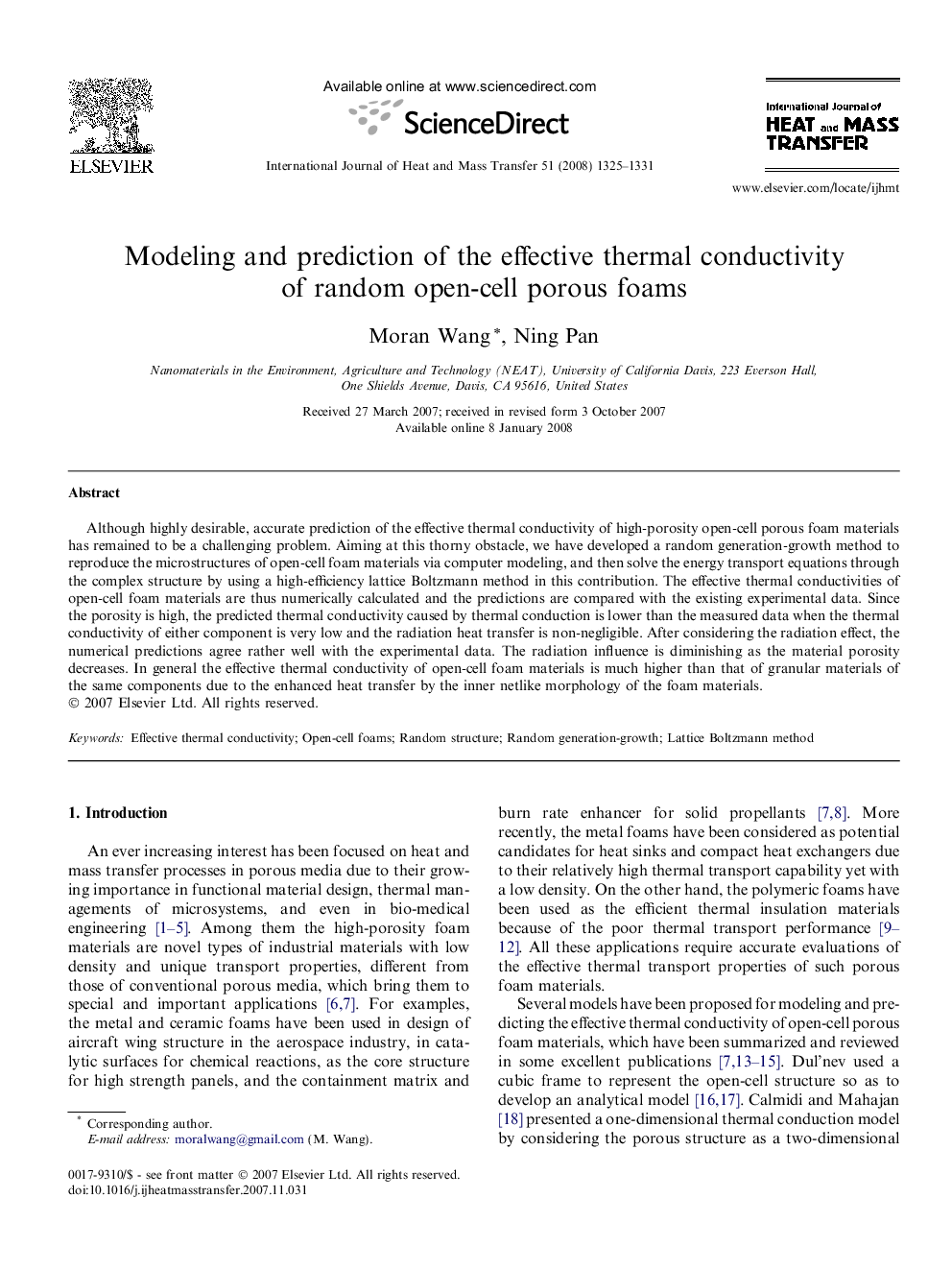| Article ID | Journal | Published Year | Pages | File Type |
|---|---|---|---|---|
| 661840 | International Journal of Heat and Mass Transfer | 2008 | 7 Pages |
Although highly desirable, accurate prediction of the effective thermal conductivity of high-porosity open-cell porous foam materials has remained to be a challenging problem. Aiming at this thorny obstacle, we have developed a random generation-growth method to reproduce the microstructures of open-cell foam materials via computer modeling, and then solve the energy transport equations through the complex structure by using a high-efficiency lattice Boltzmann method in this contribution. The effective thermal conductivities of open-cell foam materials are thus numerically calculated and the predictions are compared with the existing experimental data. Since the porosity is high, the predicted thermal conductivity caused by thermal conduction is lower than the measured data when the thermal conductivity of either component is very low and the radiation heat transfer is non-negligible. After considering the radiation effect, the numerical predictions agree rather well with the experimental data. The radiation influence is diminishing as the material porosity decreases. In general the effective thermal conductivity of open-cell foam materials is much higher than that of granular materials of the same components due to the enhanced heat transfer by the inner netlike morphology of the foam materials.
